I have got this Projekt which uses a QStatemachine to manage the UI, where I want to add a customized List. The UI is supposed to be only manipulated by key events. As far as I understand I need a ListView on the qml side.
The delegate of ListView only reacts on mouse input or direct key input. But I have use the QStatemachine in C++ to operate it, since it is handling all key events for the UI.
What I want to happen when I press the right arrow key is vor the list to be shifted to the left.
(The currentItem is alway in the middle of the screen.)
So my ListView is looking like this at the Moment.
Component {
id:myDelegation
Item {
x: 50
width: 80
height: 60
Rectangle {
width: 60
height: 60
Text {
text: name
anchors.centerIn: parent
}
color: parent.ListView.isCurrentItem ? "red" : "steelblue";
scale: parent.ListView.isCurrentItem ? 1.5 : 1;
}
}
}
ListView {
id: listView1
x: 0
y: 50
width: 1920
height: 214
orientation: ListView.Horizontal
spacing: 4
model: TileList{}
delegate: myDelegation
preferredHighlightBegin: width / 2 - 10
preferredHighlightEnd: width / 2 + 10
highlightRangeMode: ListView.StrictlyEnforceRange
}
The c++ Statemachine is a QStatemachine which sends Signals to qml.
How do I bind the signals to the delegate of the Listview?

